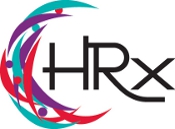 |
Examining |
November 2007
Be Grateful
For Your
Great
Employees
You know who your top employees are, but do they know that? Too frequently we take our employees for granted and forget to tell them how much we appreciate them.
Of course, the best way to do this is directly – thank them for the contribution they’re making to your organization. Many of us think we are thanking them, yet the message isn’t getting across to our employees. So try the following:
- Are you setting aside regular time with each of your employees to discuss their performance and to let them know their value to the organization? The one-time-per-year performance appraisal meeting does not accomplish this important objective.
- Determine the right amount of time to regularly meet with each of your employees for performance feedback and employee development. Bi-weekly? Monthly? Bi-monthly? Quarterly at minimum.
- These unique discussions should focus on the employee’s successes and how you can help them become more successful. It should not focus on the work at hand. We always make time for the work discussions, but not enough time is spent on our appreciation for their work.
- As you know, there are other companies who would love to hire your top employees. Employee appreciation is one of your best retention tools.
- Another aspect of this issue is whether you are communicating your appreciation in other ways than your periodic one-on-one feedback. Basically, are you treating and communicating with your employees in a way that makes them want to stay at your organization and produce at high levels?
- I’ve seen many managers over the years who think they show their appreciation, but in fact are hurting their relationship with their employees because of their management and communication styles.
- We often need to step back and look at how we actually work with our employees – not just how we think we’re working with them. A consistent respectful management style is vital. If you’re not providing that consistency, take a hard look at what you are doing and start on that tough road to change.
- If you’re losing your best employees to other organizations, remember the adage: Employees don’t leave companies, they leave managers.
Quick Links…
If you’re not
having fun
with your
human resources,
call Arlene today
at 952-996-0975
Updated Vacation Regulations

Thanksgiving has just passed. I originally planned to focus on our giving thanks for the employees we have working for us. But that topic has been moved to the column.
Instead, we’re giving thanks for the MN Supreme Court who on November 15, 2007 overruled the August 2006 court judgment requiring employers to pay out all accrued but unused vacation/PTO to employees at termination.
For the many of you who changed your employee handbook (or where I changed your handbook) to reflect the 2006 rule requiring 100% payout of vacation at termination, companies can now rewrite our policies to define how we want to handle accrued but unused vacation and PTO at termination of employment as well as throughout employment.
To quote from Fredrickson & Byron’s news announcement: “In light of the Minnesota Supreme Court decision, company policy can and will determine when an individual is entitled to payment for accrued and unused vacation or payment for other accrued paid time off upon resignation or termination.”
Their complete article can be found at http://www.fredlaw.com/articles/employment/empl_0711_amr.html.
Before August 2006 I typically included the following kinds of limitations in the vacation policies I created:
- Employees who fail to give two-weeks notice or who are terminated due to policy violation or cause are not eligible to receive accrued but unused vacation/PTO at termination of employment.
- A maximum of x days/weeks of accrued but unused vacation/PTO may be carried over from one (anniversary or calendar) year to the next. Remaining unused time off is forfeited.
- Since PTO is a blending of vacation and sick time, Company will pay out 85% of unused PTO at termination of employment to eligible employees.
As is explained in the F&B article, your employee handbook is considered a contract regarding benefits. As such, you need to be extremely clear regarding how you define vacation eligibility, accrual, carryover provisions, annual payout provisions (if any), payout at termination of employment. Be thorough in any changes you make and have it reviewed by your friendly HR consultant or employment law attorney.
Copyright (c) 2007 Arlene Vernon, HRx, Inc.
I-9 Forms
Earlier this month, the USCIS (US Citizen and Immigration Services) updated the I-9 form. Employers are expected to start using this form immediately with every new hire. Failure to use the new forms beyond December 26th can subject an employer to penalties.
Here’s a link to the new form: http://www.uscis.gov/files/form/I-9.pdf
I’m surprised and not surprised by how many small employers have been running their businesses for many years without realizing that all new employees at every organization are required to have their employees complete an I-9 form within 3 days of hire.
If you’re not aware of this law, you’re not alone. But you need to (1) collect this information on all current employees and (2) start using the form as part of your new hire orientation with all new employees.
The intent of the form is to ensure that everyone you hire is legally authorized to work in the US. Since the law went into effect on November 6, 1986, any employee who was hired after this date must have completed this form at hire.
(1) Audit your files to make sure you have every active employee’s I-9 form on file.
(2) If you identify employees who have not completed this form (or you don’t have the document), you should have them complete a new form immediately.
(3) New or replacement forms must be dated on the actual date you’re completing the form. Do not post-date the form.
(4) If you are “fixing” your files, include a note in the front of the files outlining that you completed an audit on x date and list the corrections you’ve made.
(5) Do not store I-9’s in the employee’s personnel file.
(6) Place all the completed forms in alphabetical order in an I-9 File (locked drawer).
Here’s another link for “everything you want to know about I-9’s.”
http://www.uscis.gov/files/article/EIB102.pdf
If you need my help on either of these issues, feel free to call me!
Copyright (c) 2006 Arlene Vernon, HRx, Inc.
About Arlene Vernon
Arlene Vernon, PHR, partners with small businesses as their Human Resource Xpert to create their HR systems and solve their HR problems.
If you have gaps in your HR operation, have an employee problem to solve, or want to enhance your managers’ skills, call Arlene today. Learn
how HRx can save you time and help you avoid costly HR mistakes. HRx, Inc., 574 Prairie Center Drive #135/285, Eden Prairie, MN 55344, 952-996-0975,
www.HRxcellence.com.
Subscriber Info
HRx, Inc. respects your privacy and does not give out or sell subscriber names and/or e-mail addresses. Feel free to pass this newsletter to your friends and colleagues as long as the entire newsletter is kept intact. If this newsletter has been forwarded to you, please
sign upto receive your own copy. If you wish to be taken off this list simply
send an email
Share This Article
This article is available for your use or reprinting in web sites or company communications with the agreement that Arlene’s biographical information above and a link to her website is included with the article.
